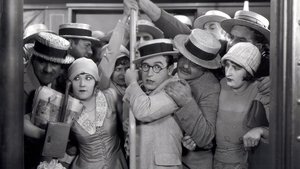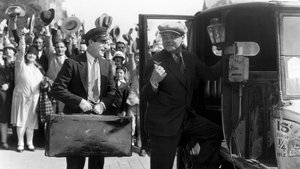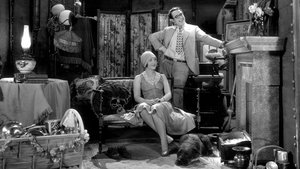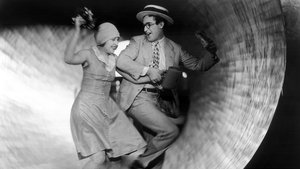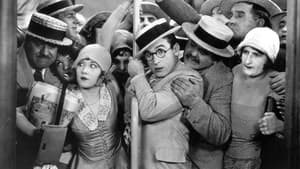Contact: info@alwanfilm.com
Video Sources 0 Views
- Watch trailer
- Speedy 1928
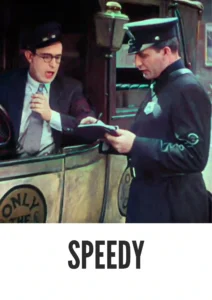
Speedy 1928 Colorized
Synopsis
Table of Contents
ToggleReview: Speedy 1928 Colorized – A Classic Silent Comedy Revived in Brilliant Color

Introduction
Speedy 1928 Full Movie stands as a testament to the timeless appeal of silent cinema and the comedic genius of Harold Lloyd. In this article, we’ll delve into the significance of this early colored film, exploring its impact on audiences and its enduring legacy in the realm of comedy.
Check The Full Colorized Movies List
Check Our Colorized Movies Trailer Channel
Understanding Speedy 1928 Colorized: Director, Cast, and Genre
Directed by the legendary Ted Wilde, Speedy 1928 Full Movie showcases his skill in crafting uproarious comedies that transcend language barriers. The film features Harold Lloyd in the titular role, whose comedic timing and physical prowess captivate audiences with every scene. Blending elements of slapstick, romance, and adventure, “Speedy” (1928) takes viewers on a wild ride through the bustling streets of New York City, where chaos and hilarity ensue at every turn.
Exploring the World of Speedy 1928 Colorized: Plot and Characters
At its core, Speedy 1928 Full Movie follows the misadventures of a young man named Harold “Speedy” Swift as he navigates the bustling streets of New York City in his quest to save his girlfriend’s grandfather’s horse-drawn trolley from the clutches of a greedy businessman. Along the way, he encounters a colorful cast of characters, from bumbling crooks to eccentric passengers, each adding to the chaos and comedy of his journey.
The Art of Film Colorization
Film colorization serves as a transformative tool that breathes new life into classic movies, allowing audiences to experience beloved stories in vibrant color. By digitally adding color to black and white films, colorization enhances the visual appeal of silent classics like Speedy 1928 Full Movie, immersing viewers in the rich tapestry of its world and revitalizing its timeless humor for modern audiences.
Early Colored Films: A Brief History
The history of colored films dates back to the early days of cinema, with filmmakers experimenting with various techniques to add color to their creations. From hand-tinted frames to early Technicolor processes, the evolution of colored film has been marked by innovation and experimentation, paving the way for modern colorization techniques that continue to captivate audiences to this day.
Speedy 1928 and Its Early Colored Version
The decision to release “Speedy” (1928) in a colorized format was met with excitement and anticipation. While purists may have had reservations about tampering with a silent classic, the early colored version of “Speedy” (1928) offers viewers a fresh perspective on Harold Lloyd’s timeless comedy, enhancing its visual appeal and introducing it to a new generation of fans.
The Debate Over Film Colorization
The debate over film colorization continues to divide audiences and critics alike, with proponents praising its ability to breathe new life into classic movies and introduce them to modern audiences, while detractors argue that it compromises the artistic integrity of the original work. As the debate rages on, filmmakers and audiences alike are left to ponder the merits and drawbacks of colorization in the ever-evolving landscape of cinema.
Examining Speedy 1928 as an Early Colored Film
As with any colorized classic, the impact of colorization on “Speedy” (1928) is a matter of personal interpretation. Some may argue that it enhances the film’s visual appeal and immerses viewers in its world, while others may feel that it detracts from the stark beauty of the original black and white version. Regardless of one’s stance on the issue, there’s no denying the enduring power of “Speedy” (1928) as a timeless comedy that continues to delight audiences of all ages.
Influence and Legacy: Speedy 1928 Colorized’s Impact on Cinema
“Speedy” (1928) has left an indelible mark on the world of cinema, inspiring countless filmmakers and captivating audiences with its timeless humor and endearing characters. From its thrilling chase scenes to its heartwarming romance, the film continues to resonate with viewers around the world, reaffirming its status as a beloved classic of the silent comedy genre.
Director’s Cinematic Legacy: Beyond Speedy 1928 Colorized
Ted Wilde’s influence extends far beyond “Speedy” (1928), with a diverse body of work that continues to captivate audiences around the globe. From his collaborations with Harold Lloyd to his groundbreaking contributions to silent cinema, Wilde’s films are celebrated for their wit, charm, and innovation, solidifying his legacy as one of the preeminent directors of Hollywood’s Golden Age.
Themes Explored in Speedy 1928 Colorized
“Speedy” (1928) explores a myriad of themes, from the triumph of the underdog to the hustle and bustle of urban life. Through its richly drawn characters and uproarious gags, the film invites viewers to laugh along with Harold Lloyd as he navigates the challenges of city living and pursues his dreams with unwavering determination.
Reception and Controversy Surrounding Speedy 1928 Colorized
Upon its release, “Speedy” (1928) received widespread critical acclaim, with many praising its inventive gags, heartwarming story, and breathtaking stunts. However, the decision to release the film in a colorized format sparked debate among purists, reigniting the age-old discussion surrounding film preservation and artistic integrity. Despite the controversy, “Speedy” (1928) remains a beloved classic that continues to entertain audiences of all ages, reaffirming its status as a timeless masterpiece of silent cinema.
Where to Watch Speedy 1928 Colorized Online
For those eager to experience the timeless charm of “Speedy” (1928), the film is readily available on popular streaming platforms such as Netflix, Amazon Prime, and Hulu. Whether you choose to watch it in its original black and white format or the early colored version, “Speedy” (1928) promises to delight and entertain with its timeless humor and endearing characters.
FAQs About Speedy 1928 Colorized
Q: Is “Speedy” (1928) based on a true story? A: No, “Speedy” (1928) is a fictional comedy that follows the misadventures of a young man named Harold “Speedy” Swift as he navigates the bustling streets of New York City.
Q: Who are the main actors in “Speedy” (1928)? A: “Speedy” (1928) features Harold Lloyd in the titular role, whose comedic timing and physical prowess captivate audiences with every scene.
Q: What awards did “Speedy” (1928) win? A: While “Speedy” (1928) did not win any major awards, it received critical acclaim for its inventive gags, heartwarming story, and breathtaking stunts.
Q: Why was “Speedy” (1928) released in a colorized format? A: The decision to release “Speedy” (1928) in color was made to introduce the film to a new generation of viewers and enhance its visual appeal for modern audiences. While the choice to colorize the film sparked debate among purists, it ultimately allowed “Speedy” (1928) to reach a wider audience and ensure its continued relevance in the annals of cinematic history.
Conclusion
“Speedy” (1928) remains a timeless classic that continues to captivate audiences with its timeless humor and endearing characters. Whether viewed in its original black and white format or the early colored version, “Speedy” (1928) stands as a shining example of the power of silent cinema to entertain, inspire, and endure through the ages. So, whether you’re a seasoned cinephile or a casual moviegoer, take a moment to revisit “Speedy” (1928) and experience the magic of silent comedy as never before.
